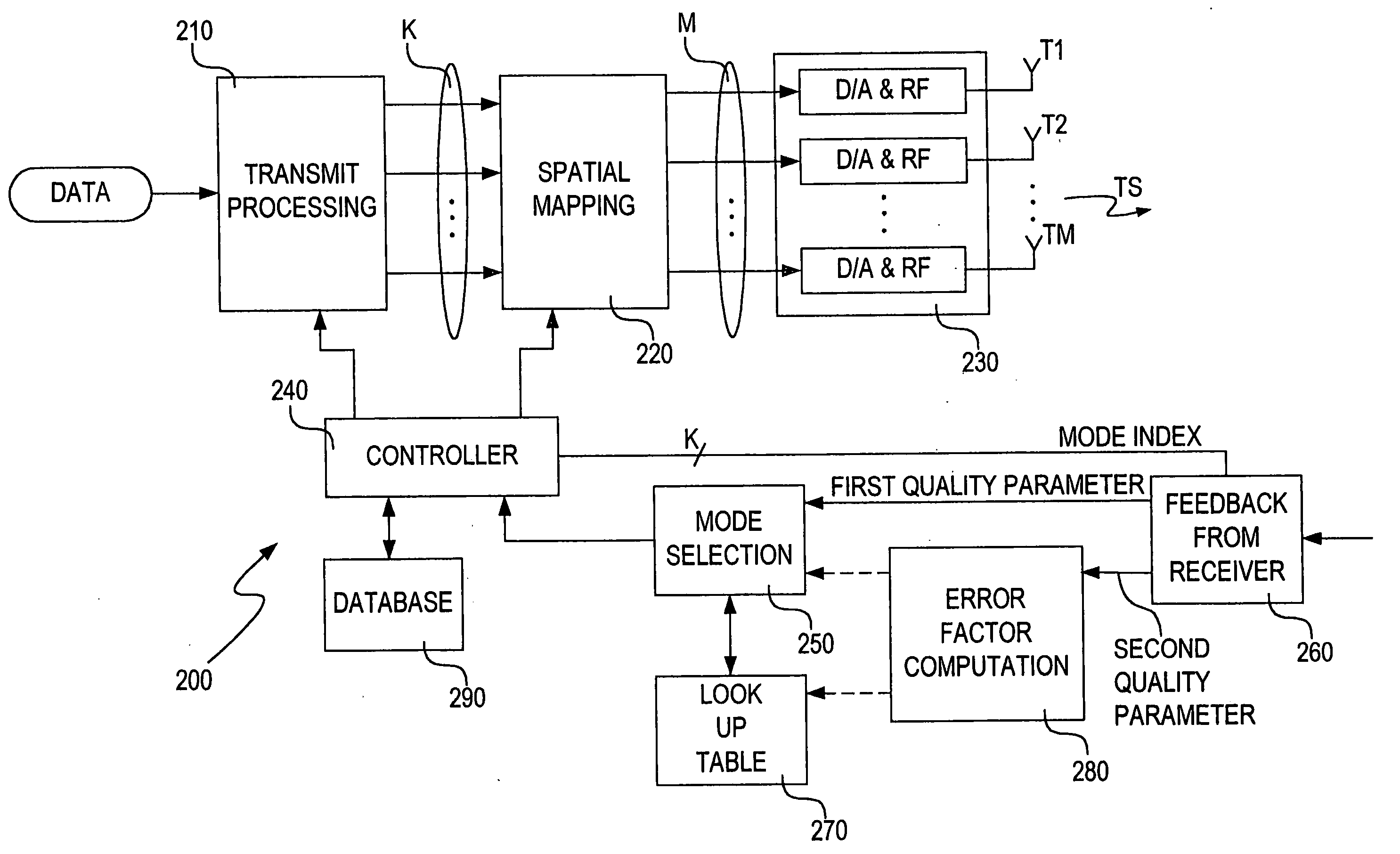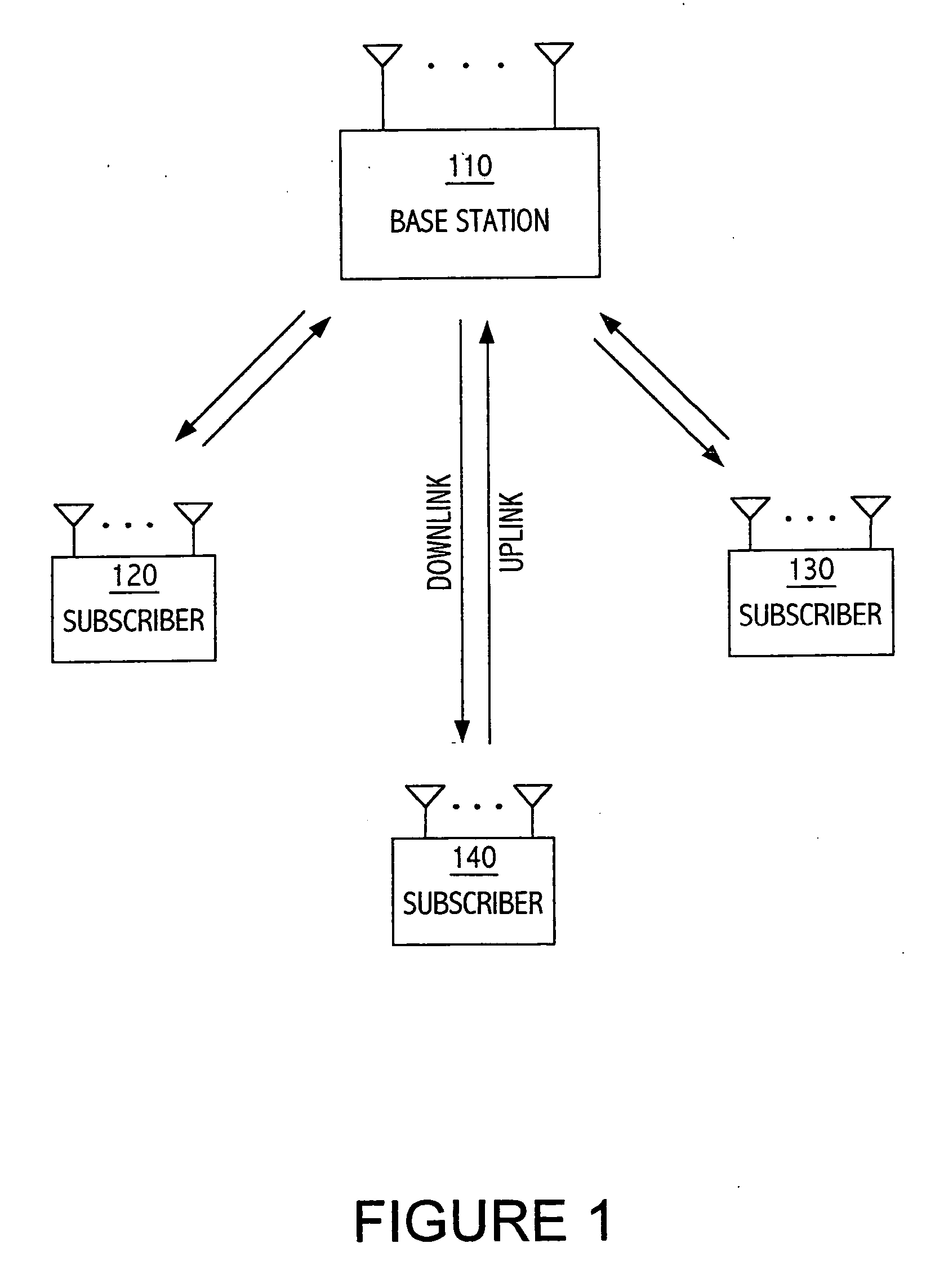System and method of dynamically optimizing a transmission mode of wirelessly transmitted information
a transmission mode and wireless transmission technology, applied in the field of wireless communication, can solve the problems of high bit-error rate, significantly lower parameter values, and excessive corruption
- Summary
- Abstract
- Description
- Claims
- Application Information
AI Technical Summary
Benefits of technology
Problems solved by technology
Method used
Image
Examples
Embodiment Construction
[0029] As shown in the drawings for purposes of illustration, the invention is embodied in an apparatus and a method for adaptively selecting a transmission mode for the transmission of data to users within a wireless cellular system. The invention can include multiple antennae systems.
[0030] Particular embodiments of the present invention will now be described in detail with reference to the drawing figures. The techniques of the present invention may be implemented in various different types of wireless communication systems. Of particular relevance are cellular wireless communication systems, such as the system shown in FIG. 1. A base station 110 transmits downlink signals over wireless channels to multiple subscribers 120, 130, 140. In addition, the subscribers 120, 130, 140 transmit uplink signals over the wireless channels to the base station 110. Thus, for downlink communication the base station 110 is a transmitter and the subscribers 120, 130, 140 are receivers, while for ...
PUM
 Login to View More
Login to View More Abstract
Description
Claims
Application Information
 Login to View More
Login to View More - R&D
- Intellectual Property
- Life Sciences
- Materials
- Tech Scout
- Unparalleled Data Quality
- Higher Quality Content
- 60% Fewer Hallucinations
Browse by: Latest US Patents, China's latest patents, Technical Efficacy Thesaurus, Application Domain, Technology Topic, Popular Technical Reports.
© 2025 PatSnap. All rights reserved.Legal|Privacy policy|Modern Slavery Act Transparency Statement|Sitemap|About US| Contact US: help@patsnap.com



